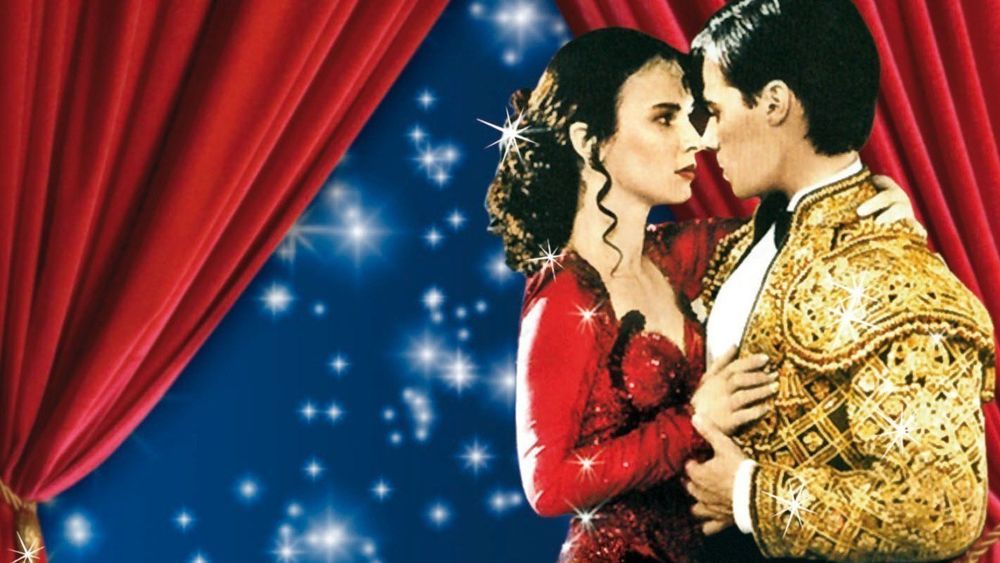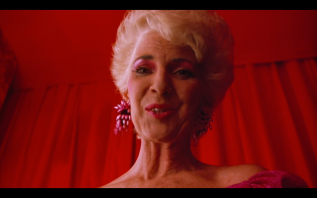
Strictly Post-Modernism: Examining Genre and Cliché in Strictly Ballroom
In her essay “Imagining the Post-Modern: Subjectivity and Strictly Ballroom,” scholar Rose Chaffey says that Luhrmann’s debut film “contains many of the hallmarks of traditional fairytales and serves some of the same instructive purposes in the context of the formation of an Australian identity and moral code” (183). Strictly in its bare bones is a love story, but Luhrmann takes the post-modern approach in giving the film several layers, love simply being the core. Scott’s personal journey serves to be the main storyline, Fran’s dynamic change second, followed by the growing that many of the characters (Shirley, Doug, Liz, and Les) do along the way, realizing clichés like “Winning isn’t everything,” as well as Fran’s family adage, “Vivir con miedo es cómo vivir a medias,” “A life lived with fear is a life half-lived.”
Fran’s storyline seems to be the one that best lends itself to fairytales – obvious comparisons include “The Ugly Duckling,” as Fran transforms from homely all the way to sexy by the end of the film. Her dancing also undergoes a miraculous transformation as well, as she starts out a novice and ends dancing expertly on the Pan-Pacific Grand Prix dancefloor.




Chaffey also makes a comparison to Cinderella, as Scott’s mom Shirley and his former dance partner Liz tend to treat Fran as an ugly stepchild/stepsister. She writes, “Fran’s beauty is hidden by her plainness and she is relegated to menial tasks and laughed at ([her nickname is] ‘Frangipanni della Squeegee-mop’) by the ugly sisters until she is ‘discovered’ by the prince who brings about her transformation” (183). Liz is constantly bumping to Fran as if she isn’t there, and Shirley constantly makes comments on Fran’s makeup and skin. Additionally, it is assumed that Fran’s mother has died, as in one scene, her grandmother tells her how much she reminds her of her. Cinderella is also without her biological mother (and father) in her fairytale.

“If your mom was here…she’d be very proud of you.”
Alternatively, Scott undergoes a “Cinderella story” transformation as well. While he does not lack in skill in the beginning of the film, he does lack in courage. When Fran suggests that the two of them dance together, Scott is dismissive, to which Fran replies, “You’re just like the rest of them. You think you’re different but you’re not, you’re just really scared…You’re a gutless wonder!” From then on, she encourages Scott by telling that he shouldn’t be afraid, and he gains the courage and confidence to dance his own steps at the Pan Pacifics.
Chaffey claims that the key to Luhrmann’s post-modernist approach in Strictly is genre-mixing and intertextual references. She writes, “The film has been described as a musical comedy, a romantic comedy, a ‘musical minus the singing'” (185). She goes on to say that the movie references American classics like Singin’ in the Rain (1952), Fred Astaire and Ginger Rodgers’ films, West Side Story (1961) and even Dirty Dancing (1987). The strong comparison to musicals despite their be no singing stems from Luhrmann’s purposeful soundtrack, with songs like “Time After Time” and “Perhaps, Perhaps, Perhaps” having meaning that viewers know to pick up on.
Additionally, her essay reads, “As a result, the plot is a ‘compendium of cliches, signaled well in advance’ and even though as readers we recognize them we happily collude, for example when Fran takes off her glasses and metamorphoses into beauty” (186).
What does it all mean? Like the other films in his “Red Curtain Trilogy,” there is so much to Strictly Ballroom that it almost seems like Baz Luhrmann has to be making some sort of statement about how bad cliches and tropes are in throwing so many into a 90 minute film. However, Luhrmann is a very sentimental person, and this story is close to him, as it is loosely based on his own experiences as a competitive ballroom dancer. “Love” is a theme also close to Luhrmann’s heart, as each one of the Red Curtain Trilogy films centers on it.
An essential part of Luhrmann’s style is excess-throwing as many cliches as possible into Strictly and seeing what sticks with audiences. If Fran’s transformation didn’t tug at your heart strings, perhaps Scott’s did, or perhaps simply the idea of “A life lived in fear is a life half-lived” is enough to resonate. Luhrmann seeks to revisit the past through revitalization, using unique themes like the competitive Australian ballroom dancing circuit to bring them back to the forefront.
Works Cited
Chaffey, Rose. “Imagining the Post-Modern: Subjectivity and Strictly Ballroom.” Australian Screen Education 29.Winter 2002. (2002): 183-188. Academic Search Complete. Web. 3 Apr. 2016.





